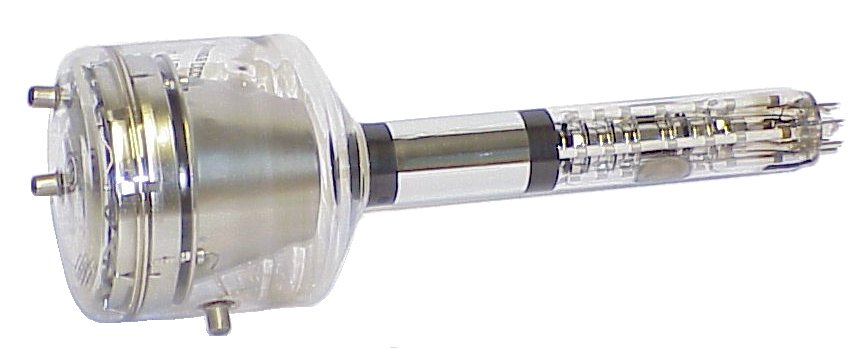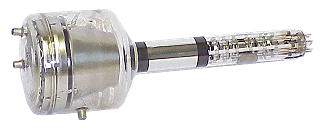Potentialoscope

Figure 1: Russian Potentialoscope LN-9
Potentialoscope
A Potentialoscope is a cathode ray tube that was used in older Russian analog radars as a memory for pulse-pair-procession.
Its function is similar to that of a normal cathode ray tube in an oscilloscope. Instead of the display is used in the tube a plate with a Cesium layer as storage. When the electron beam hits a point on this cesium disk, then there are stored electrons from the electron beam, it produces a small current pulse. If the electron beam hits for a second time on this point, then electrons can only be picked up or delivered, if the energy changes of the electron beam that hits this point.
In order to utilize more effectively the surface of the cesium layer, the entire pulse period will be stored in a spiral deflection on this layer. For an indication of moving targets (SBZ) there is used the echo signal from the coherent channel (demodulation by phase discriminator) as an input. Here, the output signal can be further processed directly, since from pulse period to pulse period fixed targets don't change its amplitude and phase shift. Moving targets have a different phase shift from period to period and so they give an output signal. Fixed clutter with constant amplitude and phase is suppressed.
For the mode of suppression nonsynchronous disturbances (UNS), the echo signal from amplitude channel will be used (by demodulation using a simple diode circuit). From period to period all signals now are suppressed except the short non-synchronous interfering pulses, which are not equal in amplitude. The output signal then consists of these interference impulses only. These must be subtracted from the original mixed echo signal in a subsequent differential amplifier.

